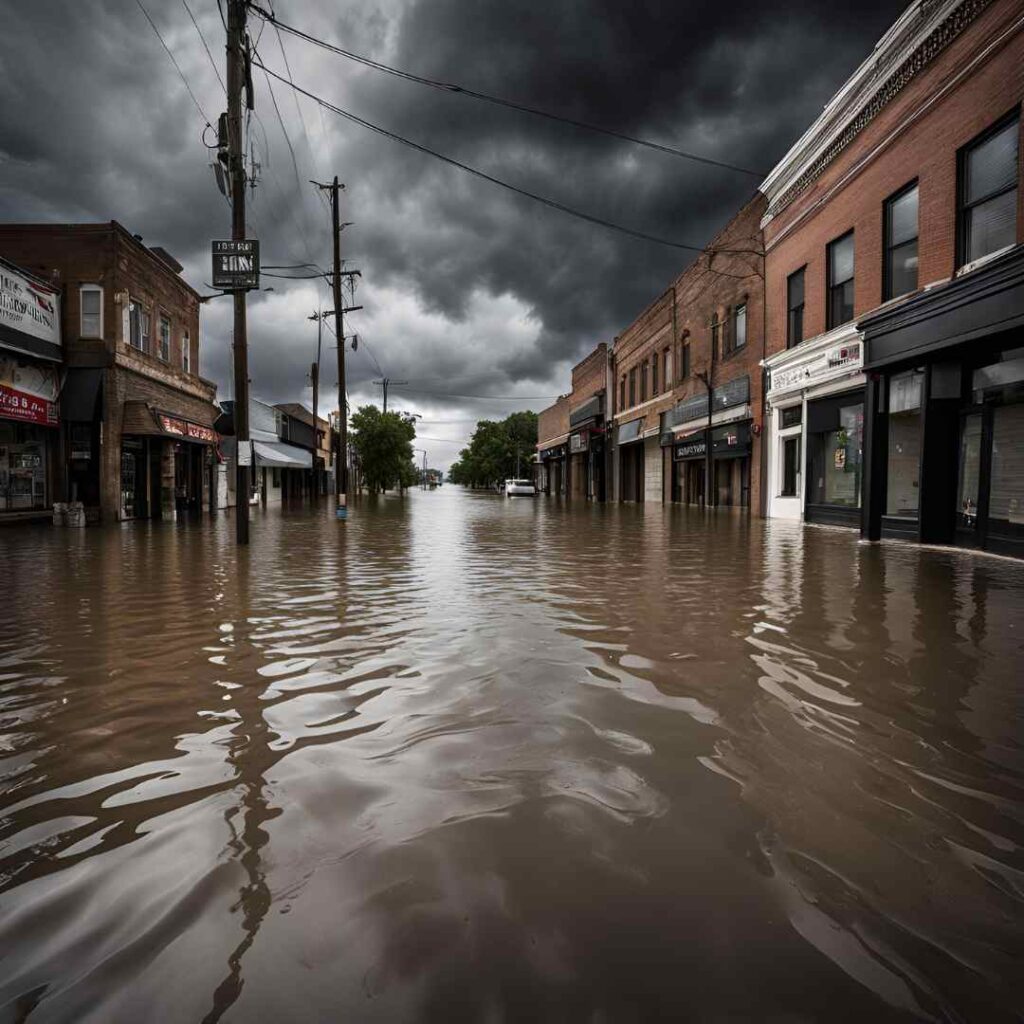Understanding Commercial Flood Insurance in the United Kingdom

The Growing Need for Commercial Flood Insurance
Flooding is the most common natural disaster in the UK, with 5.2 million properties at risk, according to the Environment Agency. Commercial properties are particularly vulnerable due to their size, location, and value. Businesses in low-lying areas, near rivers, or along coasts face significant risks of flooding, as evidenced by events in:
Yorkshire and the Humber: Repeated flooding along the River Don and Calder has caused severe disruption to industrial and commercial hubs.
South East England: London’s tidal Thames and surface water flooding have impacted retail, offices, and transport infrastructure.
Wales: Coastal communities, including those in the Vale of Glamorgan, have experienced storm surges that inundated local businesses.
Flood damage can include physical destruction of property, inventory loss, and business interruption costs, making insurance a vital component of risk management.
Commercial Flood Insurance in the United Kingdom: Types of Coverage Available
Commercial flood insurance policies typically cover:
Property Damage: Repair or replacement of buildings, fixtures, and equipment.
Contents Coverage: Protection for stock, inventory, and furnishings.
Business Interruption: Compensation for lost income during downtime caused by flooding.
Specialised policies may also cover:
Debris Removal: Costs associated with clearing and disposing of flood-damaged materials.
Relocation Expenses: Temporary relocation costs while premises are repaired.
However, policies differ significantly between insurers, and exclusions often include damage from poor maintenance or pre-existing vulnerabilities.
Regional Variations and Challenges
The availability and cost of flood insurance often depend on geographical risk factors. Areas with a history of flooding typically face higher premiums or reduced access to coverage. Insurers use flood mapping tools, such as those developed by JBA Risk Management and the Environment Agency, to assess risk. These tools consider:
Flood Zones: Proximity to rivers, coasts, or floodplains.
Drainage Systems: Urban areas with outdated or insufficient drainage are at higher risk of surface water flooding.
Topography: Low-lying regions are more vulnerable than elevated areas.
Businesses in high-risk regions, such as Cumbria or Somerset, may struggle to find affordable insurance or face significant policy excesses. The Association of British Insurers (ABI) reports that some commercial properties are deemed uninsurable due to repeated claims.
Flood Re and Its Limitations
The introduction of Flood Re in 2016 revolutionised flood insurance for homeowners by subsidising high-risk properties. However, commercial properties are excluded from this scheme, leaving businesses to navigate the private insurance market. This exclusion has been a point of contention for organisations like the Federation of Small Businesses (FSB), which argue that SMEs in high-risk areas need similar support to remain viable.

Preparing for Flood Risk
Businesses can take proactive steps to mitigate flood risk and secure better insurance terms:
Flood Risk Assessments: Conduct site-specific evaluations to understand vulnerabilities.
Flood Defences: Install barriers, pumps, and flood-resistant materials to minimise damage.
Business Continuity Plans: Develop robust strategies for operational recovery after a flood.
Engage with Insurers: Work with brokers to explore tailored policies and risk-reduction discounts.
Government and Industry Responses
In light of increasing flood risks, the UK government has introduced measures to support businesses, including:
Flood Warning Systems: Real-time alerts through the Environment Agency.
Grant Schemes: Financial aid for flood defence installations.
Planning Regulations: Policies to discourage commercial development in high-risk flood zones.
Insurers are also evolving their offerings. For example, parametric insurance—which pays out when predefined flood levels are reached—is gaining traction as a flexible alternative.
The Future of Commercial Flood Insurance
As climate change accelerates, the UK’s flood risk is set to increase. Businesses must adapt by investing in resilience and staying informed about insurance innovations. Collaboration between government, insurers, and businesses will be essential to create sustainable solutions.
Whether your business is in a flood-prone area or has never experienced flooding, understanding your insurance options and risk profile is critical. By taking a proactive approach, UK businesses can safeguard their future against the growing threat of floods.




